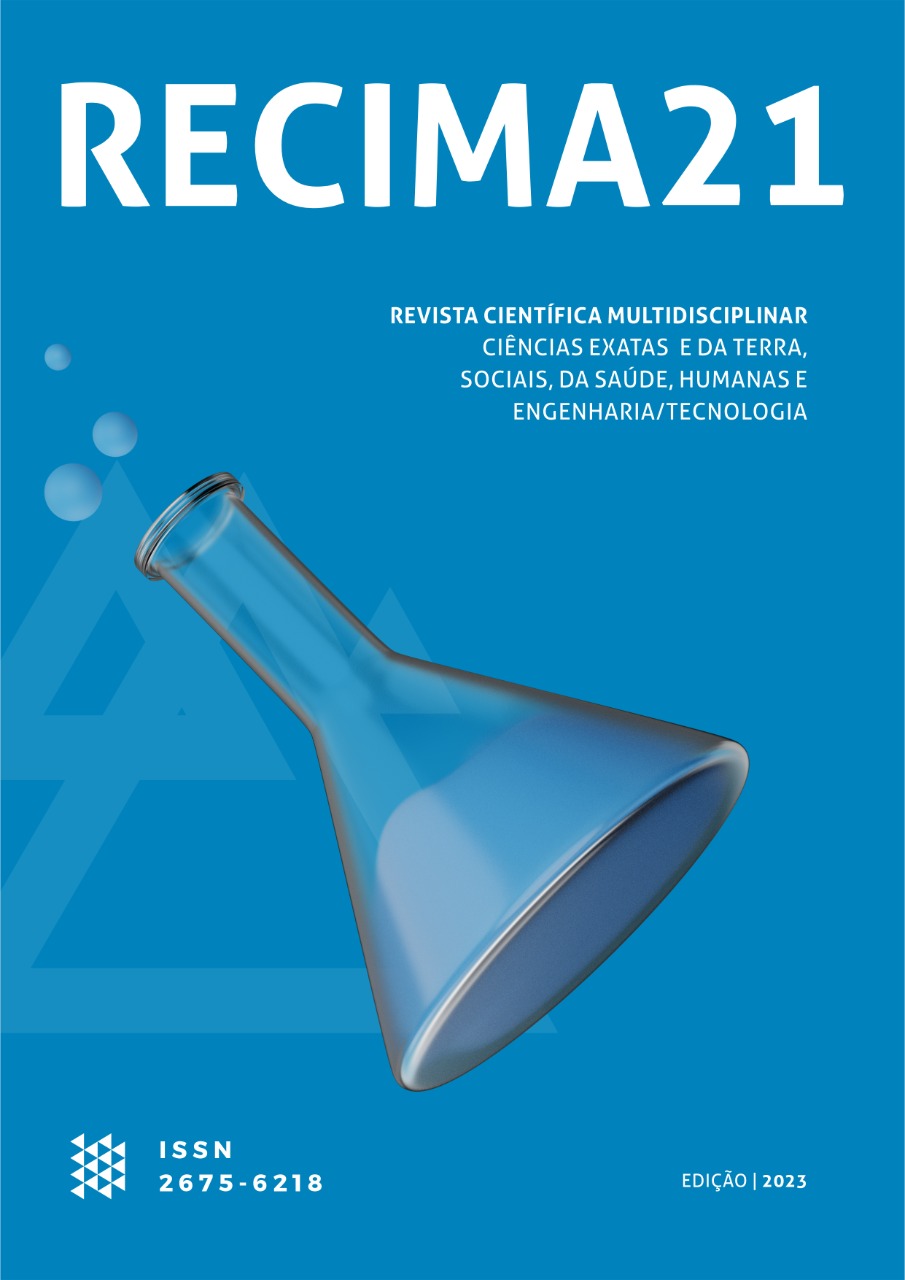FACILITAÇÃO NEUROMUSCULAR PROPRIOCEPTIVA NO TRATAMENTO DE PACIENTES COM PARALISIA CEREBRAL ESPÁSTICA: UMA REVISÃO SISTEMÁTICA
DOI:
https://doi.org/10.47820/recima21.v4i11.4383Palavras-chave:
Paralisia Cerebral; Facilitação Neuromuscular Proprioceptiva e Espasticidade.Resumo
A Paralisia Cerebral (PC) se caracteriza por alterações neurológicas que ocorrem na infância, comprometendo o desenvolvimento motor e cognitivo. É um distúrbio do movimento e da postura que se caracteriza principalmente pelo acometimento motor, acompanhada de outras desordens. Objetivo: Analisar a eficácia da Facilitação Neuromuscular Proprioceptiva (FNP) no tratamento de pacientes com paralisia cerebral espástica. Métodos: Trata-se de uma revisão sistemática de ensaios clínicos randomizados analisados por dois revisores independentes, conforme a recomendação da plataforma PRISMA, utilizando nas bases de dados National Library of Medicine (PubMed), Physiotherapy Evidence Database (PEDro), Cochrane Central Register of Controlled Trials (CENTRAL) e LILACS. Resultados: Foram incluídos cinco estudos que abordavam o FNP no tratamento de pacientes com paralisia cerebral espástica, sendo utilizada a escala PEDro para analisar a qualidade metodológica dos artigos. Conclusão: O FNP demonstra ser um conceito promissor na melhora de equilíbrio, marcha, controle de tronco, alinhamento pélvico e independência funcional em pacientes com paralisia cerebral espástica. Entretanto, na literatura atual são necessárias mais evidências de alta qualidade para estabelecer a eficácia ou não do FNP no tratamento desses pacientes.
Downloads
Referências
DABHI, M.; RAKHOLIYA, S. A Study to Evaluate the Effect of Proprioceptive Neuromuscular Facilitation Stretching on Balance and Gait in Spastic Diplegic Cerebral Palsy: An Interventional Study. Indian Journal of Public Health Research & Development, v. 11, n. 7, p. 448–454, 2020.
FOSDAHL, M. A. et al. Stretching and progressive resistance exercise in children with cerebral palsy: A randomized controlled trial: A randomized controlled trial. Pediatric physical therapy. The official publication of the Section on Pediatrics of the American Physical Therapy Association, v. 31, n. 3, p. 264–271, 2019.
KRUSE, A. et al. Acute effects of static and proprioceptive neuromuscular facilitation stretching of the plantar flexors on ankle range of motion and muscle-tendon behavior in children with spastic cerebral palsy—A randomized clinical trial. International journal of environmental research and public health, v. 19, n. 18, p. 11599, 2022.
KRUSE, A. et al. Eight weeks of proprioceptive neuromuscular facilitation stretching and static stretching do not affect muscle-tendon properties, muscle strength, and joint function in children with spastic cerebral palsy. Clinical biomechanics (Bristol, Avon), v. 107, n. 106011, p. 106011, 2023.
LIN, Y.; WANG, G.; WANG, B. Rehabilitation treatment of spastic cerebral palsy with radial extracorporeal Shock wave therapy and rehabilitation therapy. Medicine, v. 97, n. 51, p. e13828, 2018.
LIU, X. et al. Comparative analysis of curative effect of bone marrow mesenchymal stem cell and bone marrow mononuclear cell transplantation for spastic cerebral palsy. Journal of translational medicine, v. 15, n. 1, p. 48, 2017.
NIMMY; SHANMUGAN, S.; RANI, S. Effectiveness of pelvic proprioceptive neuromuscular facilitation on trunk control in children with spastic diplegia:A randomized controlled trial. Indian journal of public health research and development, v. 11, n. 2, p. 571, 2020.
SADOWSKA, M.; SARECKA-HUJAR, B.; KOPYTA, I. Cerebral Palsy: Current opinions on definition, epidemiology, risk factors, classification and treatment options. Neuropsychiatric disease and treatment, v. 16, p. 1505–1518, 2020.
SALPHALE, V. G. et al. Effectiveness of pelvic proprioceptive neuromuscular facilitation on balance and gait parameters in children with spastic diplegia. Cureus, v. 14, n. 10, 2022.
SHIWA, S. R. et al. PEDro: a base de dados de evidências em fisioterapia. Fisioterapia em Movimento, Curitiba, v. 24, n. 3, p. 523–533, set. 2011.
SILVA, G. S. et al. Efeitos da facilitação neuromuscular proprioceptiva sobre variáveis cardiorrespiratórias: revisão narrativa da literatura. SAÚDE REV., Piracicaba, v. 21 n. 1, p. 165-179, 2021.
TEDLA, J. S. et al. Transcranial direct current stimulation combined with trunk-targeted, proprioceptive neuromuscular facilitation in subacute stroke: a randomized controlled trial. Peer J, v. 10, n. e13329, p. e13329, 2022.
Downloads
Publicado
Licença
Copyright (c) 2023 RECIMA21 - Revista Científica Multidisciplinar - ISSN 2675-6218

Este trabalho está licenciado sob uma licença Creative Commons Attribution 4.0 International License.
Os direitos autorais dos artigos/resenhas/TCCs publicados pertecem à revista RECIMA21, e seguem o padrão Creative Commons (CC BY 4.0), permitindo a cópia ou reprodução, desde que cite a fonte e respeite os direitos dos autores e contenham menção aos mesmos nos créditos. Toda e qualquer obra publicada na revista, seu conteúdo é de responsabilidade dos autores, cabendo a RECIMA21 apenas ser o veículo de divulgação, seguindo os padrões nacionais e internacionais de publicação.













